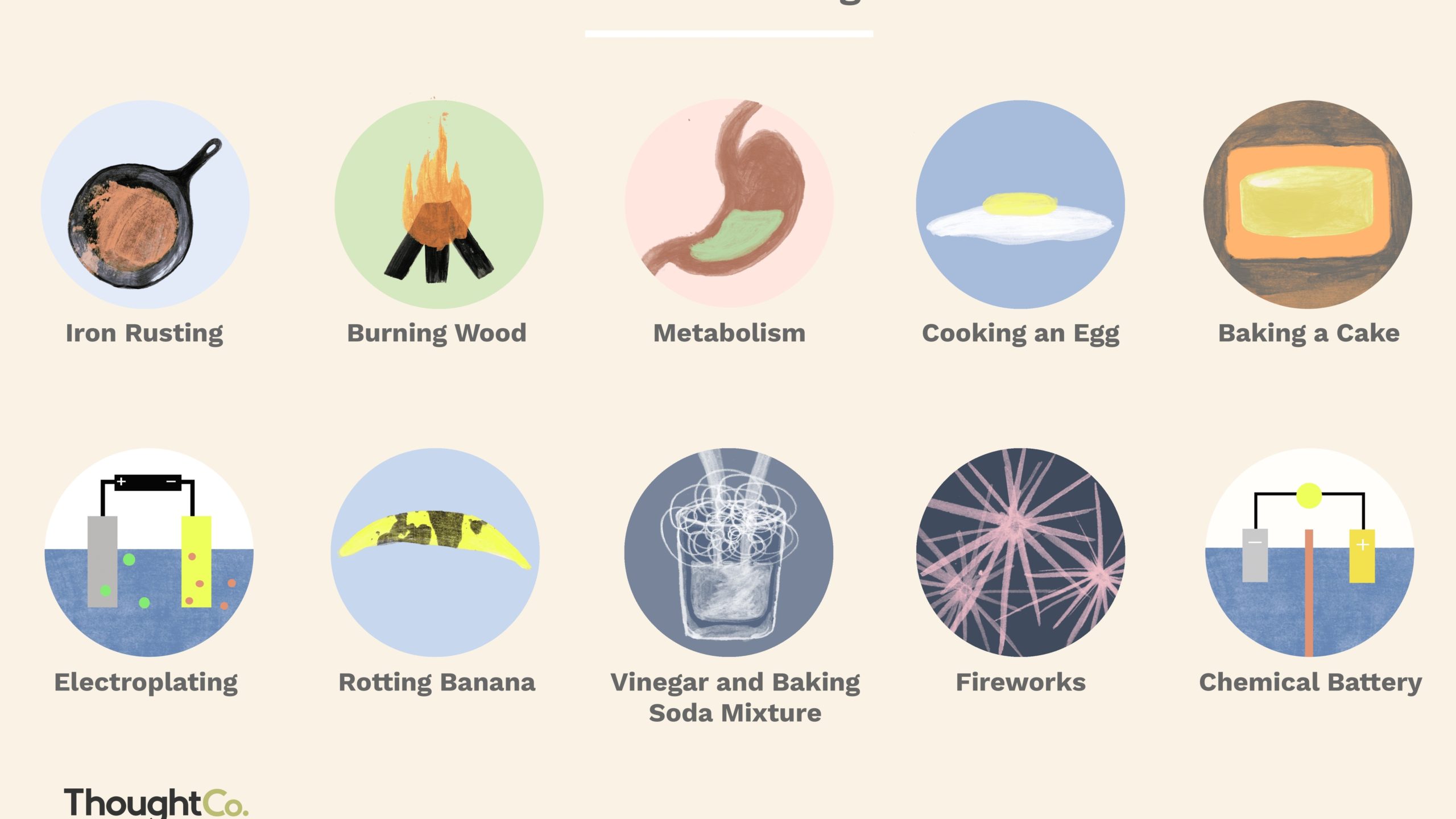
Chemical changes involve chemical reactions and the creation of new products. Typically, a chemical change is irreversible. In contrast, physical changes do not form new products and are reversible. Here are some common examples of chemical changes:
1. The rusting of iron: When iron is exposed to moisture and oxygen, it undergoes a chemical reaction that results in the formation of rust. Rust is a new substance that has different properties than the original iron.
2. Combustion (burning) of wood: When wood is burned, it undergoes a chemical reaction with oxygen in the air to produce carbon dioxide, water vapor, and ash. The original wood is transformed into new substances with different properties.
3. The metabolism of food in the body: When we eat food, it undergoes a series of chemical reactions in our body that break down the food into simpler molecules that can be used for energy and other purposes.
4. Mixing an acid and a base: When an acid and a base are mixed together, they undergo a chemical reaction that results in the formation of water and a salt. The original acid and base are transformed into new substances with different properties.
5. Cooking an egg: When an egg is cooked, the heat causes the proteins in the egg to denature and coagulate, resulting in a new substance with different properties than the original egg.
6. Digesting sugar with the amylase in saliva: When we eat sugar, the amylase in our saliva breaks down the sugar into simpler molecules that can be absorbed by our body.
7. Mixing baking soda and vinegar to produce carbon dioxide gas: When baking soda and vinegar are mixed together, they undergo a chemical reaction that produces carbon dioxide gas. The original baking soda and vinegar are transformed into new substances with different properties.
8. Baking a cake: When a cake is baked, the heat causes a series of chemical reactions to occur that transform the raw ingredients into a new substance with different properties.
9. Electroplating a metal: When a metal is electroplated,
